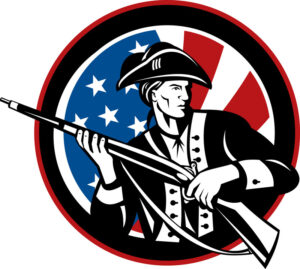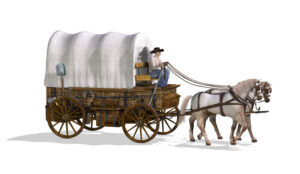Fairfax County’s Race-Centric Curriculum for US History
Introduction
This post goes to the heart of what this website is all about: What is really being taught in Fairfax County public schools? It is a continuation of “Development of New ‘Anti-Racism’ Curriculum in Fairfax County,” January 16, 2022. That post outlines the School Board’s decision to revise the social studies curricula to stress the role of “power, identity, privilege and bias.” The current post describes how the 11th grade “VA/US History” course has been consumed by these themes.
Several links to the actual content of what is in the curriculum are included. The links are well worth examining. As you will see, objectivity and completeness have been jettisoned in favor of indoctrinating our youth with the idea that history can best be explained by stressing injustices to minorities and the self-interest of powerful majorities.
Key Features
The overall Curriculum Guide for the VA/US History course can be found HERE. As it explains, the plan is based on Fairfax’s “anti-racism, anti-bias education” policies.
Each unit in the course contains “priority standards,” which establish the principal things students should learn. As the guide states, the standards were developed using “backward design.” This is a process by which educators begin by identifying the key points they want students to learn, and then shape the curriculum to emphasize those important take-aways. On its surface, “backward design” sounds good: “Don’t just plow through historical events and dates; tie the events and dates into meaningful themes.”
The issue is: What should the themes be? And should there be only one theme, or several? Should U.S. history be taught as a rich canvas, or should it be presented as a crude, black-and-white drawing, focusing on the negatives? Unfortunately, the Fairfax County School Board has opted for the latter approach. The Curriculum Guide indicates that every unit of the VA/US History course should focus on how power, position, privilege and agency have shaped our history, and how those factors have affected students’ “identities” and communities.
Unit-by-Unit Teaching Guide for VA/US History
“Why & How We Study History and the Social Sciences”
The first two weeks of the VA/US History course educates students about why and how history is taught. The teaching guide for this unit is HERE. The “priority standard” for this segment states that students should be taught “thinking skills … with an emphasis on the concepts of power, position, bias, and agency, and [how to] apply them to their learning regarding their identities, communities, states, the nation and the world.” In addition, students should learn to fit themselves into “multiple identity groups,” and they should be taught to “examine diversity in social, cultural, political and historical contexts ….”
The term “identity,” which is used throughout the course, refers to a person’s membership in various demographic groupings, such as race, ethnicity, sex, sexual orientation, country of origin, and religion. The terms “power” and “position” refer to the idea that persons in power act to protect their superior positions and interests, often to the detriment of people who lack such power and position.
“Early America: Settlement and Colonization” 
This is a two-week unit in the course. The teaching guide for the segment is HERE.
The unit overview states that it should be a study of “interactions and power.” The “priority standard” is to analyze “cultural interactions among American Indians, Europeans and Africans, with a focus on the influence of power, position, and/or agency in the development of the 13 colonies.” In addition, students will be taught to “recognize that power and privilege influence relationships on interpersonal, intergroup and institutional levels ….” The teaching guide indicates that this segment of the course is intended to focus almost entirely on slavery and racism.
More particularly, the course outline stresses that Virginia had an agricultural economy which led English colonists to enslave people from Africa; that the Virginia House of Burgesses adopted Slave Codes; and that slavery became more and more entrenched in the decades after 1619. Throughout the colonies, “private ownership of property characterized colonial life …, although these practices were guided by racism.”
In New England, society was based on religious standing. Puritans became intolerant of dissenters, and dissenters founded Rhode Island. “Both colonies established a system of enslavement ….” The middle colonies were generally more tolerant and flexible “for the European immigrants,” but “for Africans and Native Americans, the environment included enslavement and racial intolerance.”
And so on … page after page of similar emphasis on the subjugation of Africans and other minorities to promote the wealth and power of white European settlers. This era of our history is important for much more, of course, but the developers of this curriculum have chosen to concentrate almost entirely on issues of injustice.
“Revolution and the New Nation”
The overview for this two-week unit is HERE. We did not receive a more detailed outline in response to our Freedom of Information Act request, so we cannot describe the content of this segment in any detail. However, the overview states that this unit is a “study in identity and justice.” The priority teaching standard here is for students to “understand the issues and events leading to and during the Revolutionary Period by critically evaluating the principles and legacies of the foundational documents of the United States upon students’ identities, communities, and/or the world.”
“Early National Period and Westward Expansion and Contraction”
The teaching guide for this three-week segment of the VA/US History course is HERE.
The guide describes this unit as “a study in power and conflict.” The topics include the adverse effect of white settlement on indigenous people; treaties made and broken by white people; forcible removal of native populations from their homelands; expansion of slavery into the areas previously controlled by the native people; and the acquisition of Texas, which opened up a vast new area for slavery. The rise of the Whig party in opposition to Andrew Jackson is discussed, as is the emergence of Know Nothings, who opposed certain immigrants. Conflicts between the North and South over slavery are also covered, as well as the influence of abolitionists in the North. The outline for the segment states that “cultural, economic and constitutional differences between the North and the South, all based on slavery, eventually resulted in the Civil War.” Finally, the unit covers the Fugitive Slave Act, the Dred Scott case, and the creation of the Republican Party, which was devoted to stopping the spread of slavery into the territories.
In reality, of course, much happened in the first half of the nineteenth century besides conflicts about the treatment of indigenous people and African Americans. For example, there was the creation of political parties (Federalists vs. Jeffersonian Democrats) which had very different views about the respective roles of state governments and the national government. There was the emergence of the Supreme Court as an important factor in the national government. There was the Louisiana Purchase; ongoing conflict with England, leading to the War of 1812; the Monroe Doctrine; and a war with Mexico. These events are not mentioned, or are only mentioned in passing, in the unit guide. With respect to the era of Andrew Jackson, the guide mentions in passing that it produced an expansion of democracy for white men, but the main emphasis is on unfair treatment of minorities. In fact, the era was important for other reasons as well. The guide characterizes the conflict between Northern and Southern states as if slavery was the only issue, whereas in reality there were other important sources of conflict as well, including their differing economies (manufacturing vs. agricultural) and serious conflicts about tariff policies. Much of this other history is seemingly unimportant in the Fairfax school system’s race-centric view of history.
“The US Civil War and Reconstruction”
The overall unit guide for this three-week segment of the course is HERE. We did not obtain a more detailed outline in response to our Freedom of Information Act request. A focus on race-related conflict before, during and after the Civil War is understandable in teaching about this era, but we can’t comment in more detail without seeing the detailed teaching guide for the segment.
“Industrialization and Immigration”
The teaching guide for this three-week unit is HERE.
The guide states that this segment covers how the nation grew and changed from the end of Reconstruction through the early
twentieth century. The “priority standard” for this era is “to understand the experiences of immigrants, developments of the Progressive Movement, the impact of prejudice and discrimination (including ‘Jim Crow’ laws), and the practice of eugenics in Virginia with an emphasis on the concepts of power, position and agency.” Also, students will be taught to “recognize that power and privilege influence relationships on interpersonal, intergroup and institutional levels ….”
Once again, the emphasis is on issues of race and discrimination. For example, economic growth during the latter part of the nineteenth century is described in the teaching guide as follows: “The growth, while positive for some, destroyed ways of life that American Indians had practiced for centuries ….” Much of this unit discusses disenfranchisement of black voters, lynching, other discrimination against African Americans, and migration of African Americans to the north as northern cities expanded. In discussing inventions and innovation, the guide mentions an African American member of Thomas Edison’s research team, Lewis Lattimer, who invented an effective filament for light bulbs, but does not mention Thomas Edison. Nor does it mention Alexander Graham Bell, the Wright Brothers, George Eastman, Elisha Otis, Andrew Carnegie, or other non-African American inventors and innovators.
With respect to teaching students about “the practice of eugenics in Virginia,” should this really be one of the “priority” topics, as mandated in the unit guide? Given all the things that happened in the late-19th and early-20th centuries, why have the administrators of Fairfax County schools identified this as one of the most important topics to focus on?
Other Units of the VA/US History Course
Later units in the VA/US History course cover Overseas Imperialism and World War I, the Great Depression and the New Deal, World War II, the Cold War, Civil Rights & American Identity, and the United States in the 21st Century. The unit guides for them are linked here. The emphasis on issues of race and injustice is less pronounced in some of them, particularly the ones dealing with foreign affairs. Nevertheless, in all of them the makers of the curriculum emphasize that students should be taught about power, prejudice, injustice, etc. and the effect of historical events on students’ “identities.”
Discussion
Education about American history should not be Pollyannaish, painting our past only in glowing colors, ignoring the injustices and mistakes of the past. By the same token, however, it shouldn’t be designed to make the injustices and mistakes the prime focus of the overall picture.
At the outset of our investigation into the curricula of the Fairfax County public schools, we studied the social studies textbooks, and reported on their content in the post entitled “First Steps,” December 15, 2021. The texts were professionally developed, and they attempt to cover our history thoroughly and objectively. Unfortunately, the current administrators of Fairfax County’s public schools don’t seem to want such balance. As the school Superintendent, Scott Braband, declared at the kickoff for the 2020-2021 school year, teaching about race and injustice would no longer be “a thing” to be taught; it would now be “the thing.” The new curriculum for the VA/US History course embodies that approach.
This curriculum should be an alarm call to citizens concerned about a full and balanced education for Fairfax County students.
If you find this post to be informative, please pass it on to others, and urge them to register for future posts on this website.





It appears to me that, in and of itself, “backward design” is a self-fulfilling “prophecy.”
There appears, furthermore, to be no opportunity for the development of independent or individual thought by young, impressionable minds. Rather this teaching program is a shameless “leading argument” about which children/adolescents have no knowledge. Critical evaluation of the slanted “facts” presented from the bully pulpit is highly unlikely.
Once again, Thank You for bringing the truth to our knowledge and awareness..
So here is my response::
What can I do?
Where should I focus my energy fighting this?
Do you think we can opt out kids out and do our own history class at home?
I will have an 11th grade student next year?
Thank you,
Christine
Christine: Thanks for your comment. Your “what can I do” question will be the subject of my next post.
Mark
This was a very nice post. In concept I would like to put in writing like this additionally – taking time and actual effort to make an excellent article… however what can I say… I procrastinate a lot.